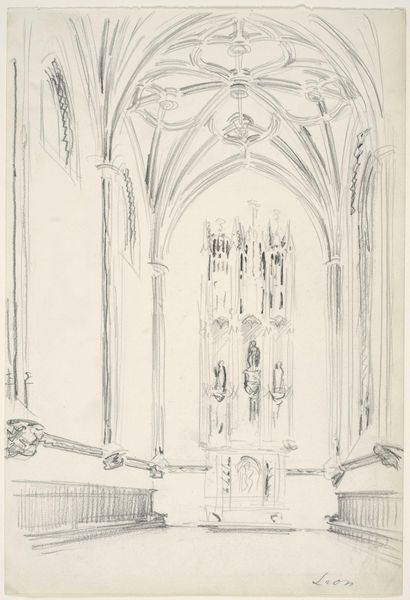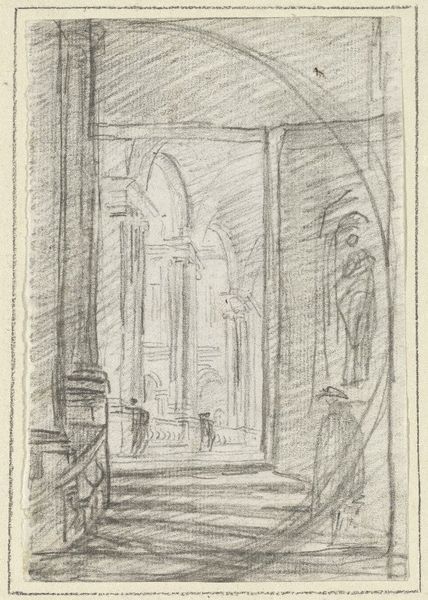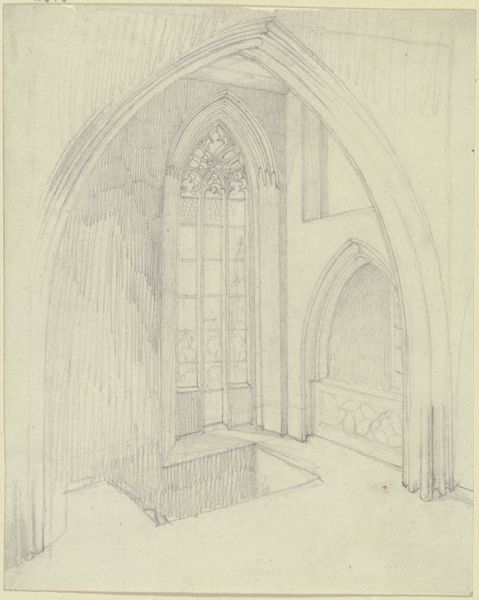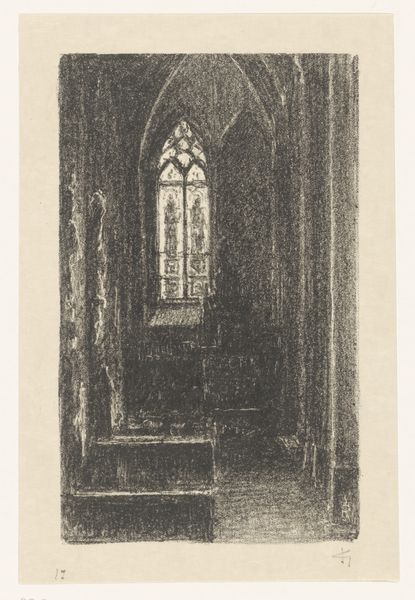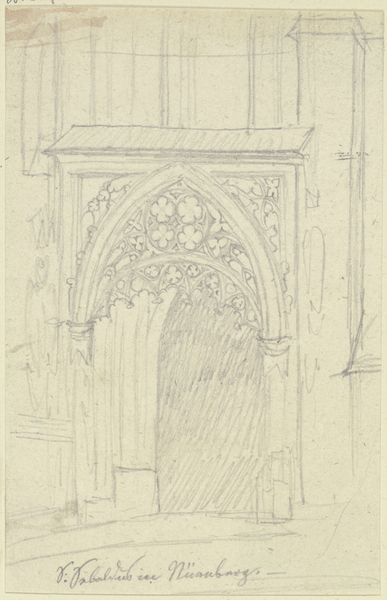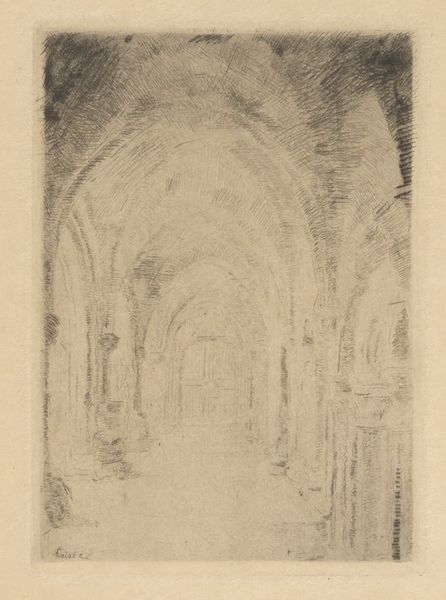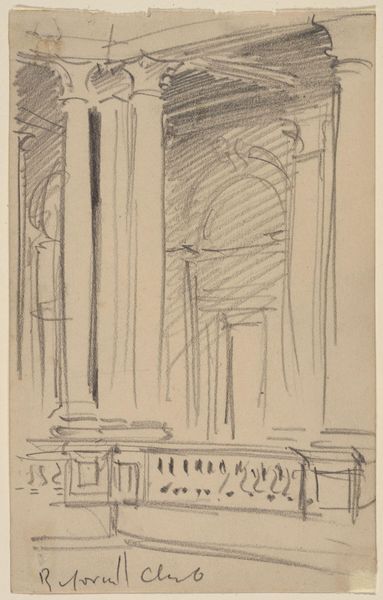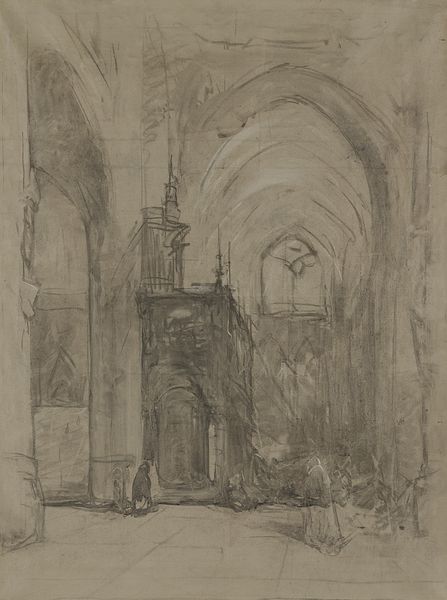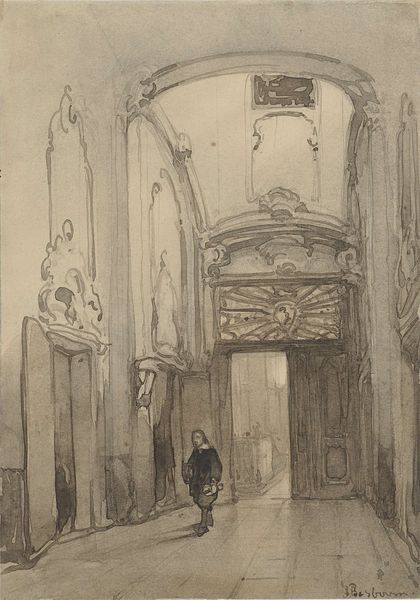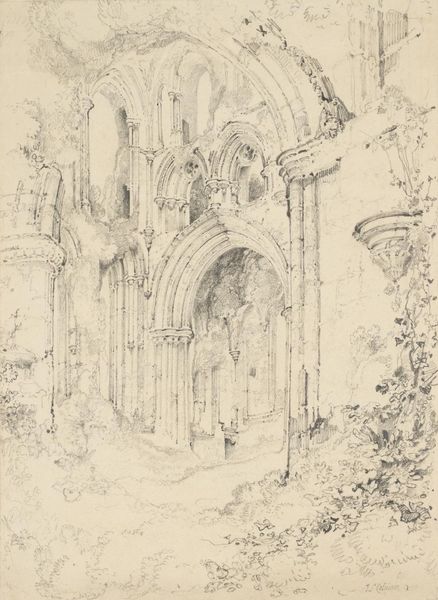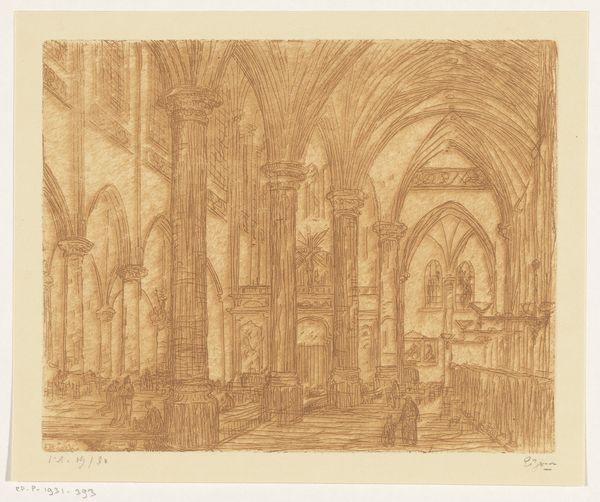
Dimensions: height 125 mm, width 74 mm
Copyright: Rijks Museum: Open Domain
Editor: Here we have Jacob Maris's "Interior of a Gothic Church," created sometime between 1847 and 1899. It's a pen and ink drawing with a raw, unfinished quality. What’s interesting to me is the implied grandeur of the architecture despite the humble, almost fleeting nature of the medium. What do you see in this piece? Curator: Well, it’s tempting to view this drawing solely for its aesthetic qualities - the stark lines, the contrasts in light. But considering the socio-political climate of the mid-to-late 19th century is vital. Churches were central not just to spiritual life but to civic identity and community power. The Gothic style itself carries a heavy symbolic weight, evoking the medieval period, a time often romanticized but also fraught with conflict and rigid social structures. What statement might Maris be making, or perhaps questioning, by choosing this subject matter? Editor: So, you're saying this image does more than simply depict an architectural space, it kind of evokes broader questions regarding power structures within the community, as well as an interest in medieval aesthetic values, even? Curator: Precisely. Art often engages with power whether directly, or through its setting; what institutions facilitate or limit an artist’s creation. Consider the Rijksmuseum, where this piece resides today - another institution shaping how we view it. The context of its display inevitably influences its interpretation. Do you think its location in a national museum reinforces or challenges traditional notions of Dutch identity, or the role of religion within that national narrative? Editor: I hadn't considered the impact of the museum's curatorial context, but that makes so much sense! I guess, considering that it is displayed within a public institution now makes a strong political statement simply due to how visible and ‘valid’ it becomes when inside it. It validates these images. Curator: Absolutely. The beauty of studying art history is realizing that every image, every object, carries a story far beyond its immediate appearance. It requires constant interrogation of its historical, cultural, and institutional baggage. Editor: That's fascinating; it's so much more than just "looking" at art, then. Curator: Exactly, understanding art within context requires understanding a larger world.
Comments
No comments
Be the first to comment and join the conversation on the ultimate creative platform.
